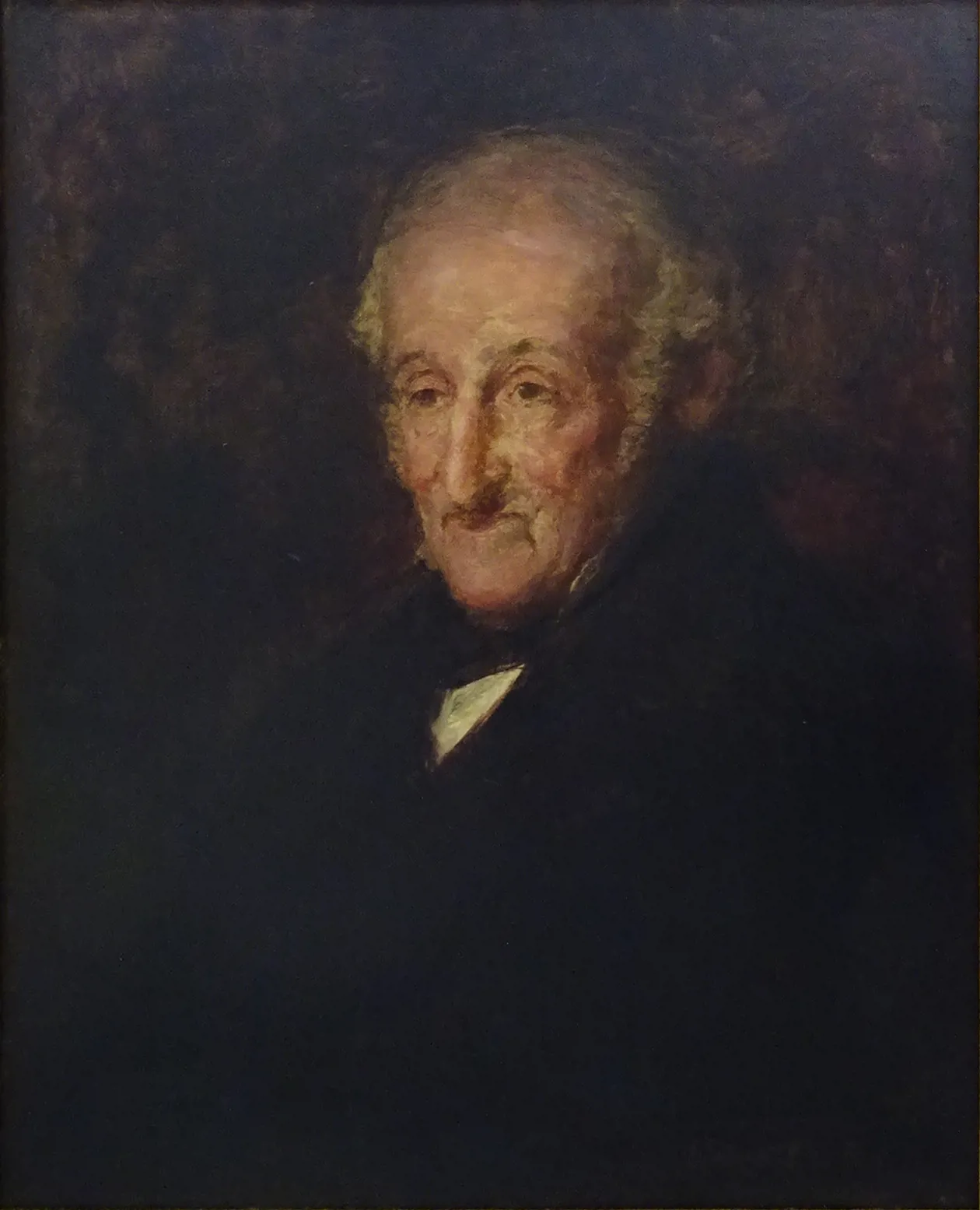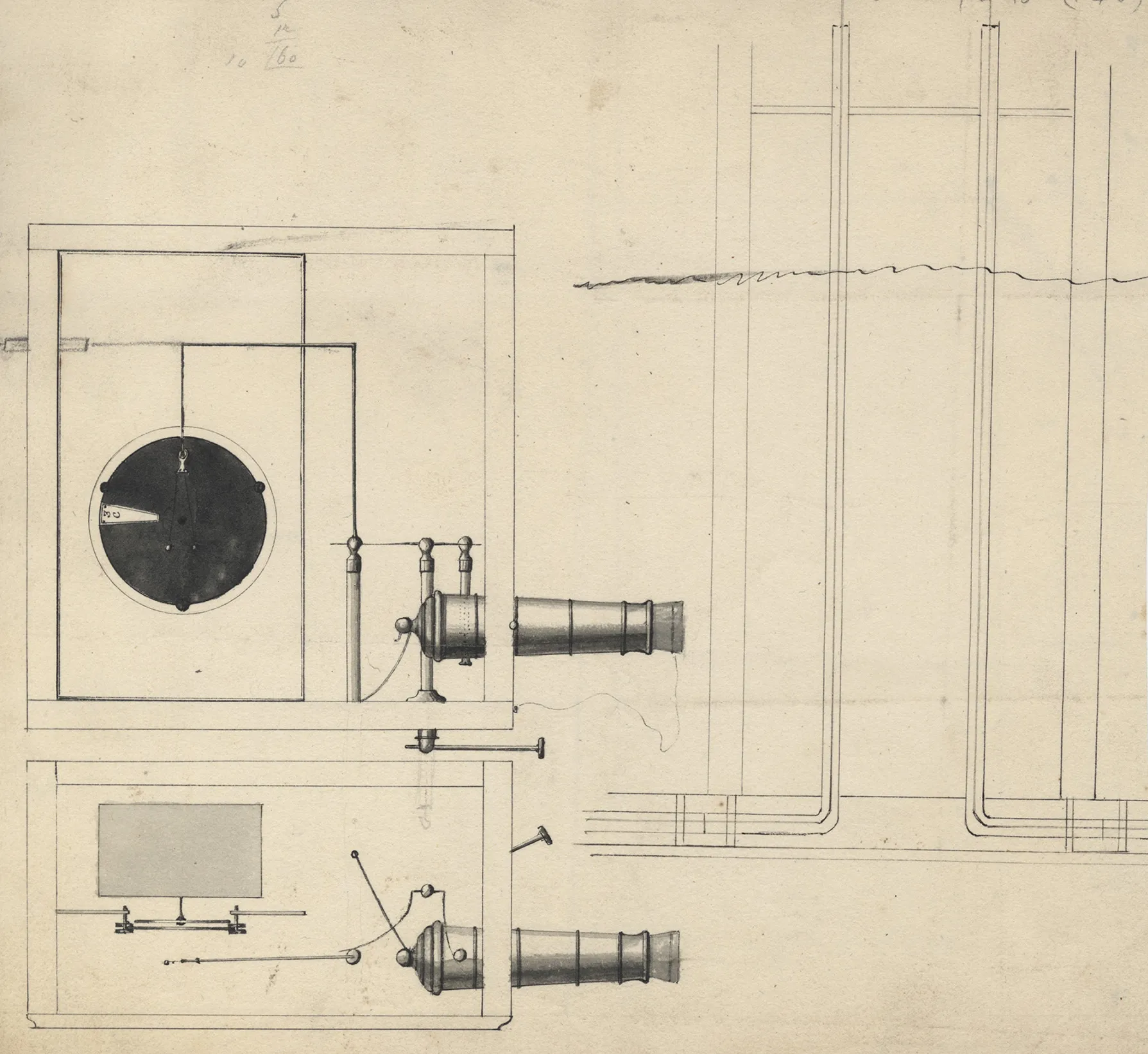In 1816 Francis Ronalds, then living at Upper Mall, Hammersmith, built in his back garden two frames to accommodate eight miles of wire for his new invention of an electrostatic telegraph based on synchronously revolving discs.
For three or four years, encouraged by the octogenarian Swiss meteorologist, Jean Andre De Luc, Ronalds had been enthusiastically experimenting with electrostatic clockwork devices.
After sending messages along his wires on the frame, he developed another version in which the wires were enclosed in glass tubes buried in the ground. At each end of the line, a clockwork mechanism turned synchronously revolving discs with letters on them. A frictional electricity machine kept the wire continuously charged, while at each end two pith balls hung from the wire on silk threads, and since they were similarly charged from the wire they stayed apart.
When someone desired to send a message he earthed the wire at his end at the moment when the dial indicated the desired letter. At the receiving end, the pith balls would fall together when earthed and the recipient noted the letter showing on his dial at that moment. The system was slow and depended on the two dials staying in step, but Ronalds demonstrated that it would work over 150 metres of wire.



We’re upgrading our systems, and this includes changes to our customer and member account log in, MyIET. It’s part of our big picture plan to deliver a great experience for you and our wider engineering community.
Whilst most of our websites remain available for browsing, it will not be possible to log in to purchase products or access services from Thursday, 17 April to Wednesday, 30 April 2025. Our Member Relations team is here to help and for many of our services, including processing payments or orders, we’ll be able to support you over the phone on +44 (0)1438 765678 or email via membership@theiet.org.
We apologise for any inconvenience this may cause and thank you for your understanding.
For further information related to specific products and services, please visit our FAQs webpage.
